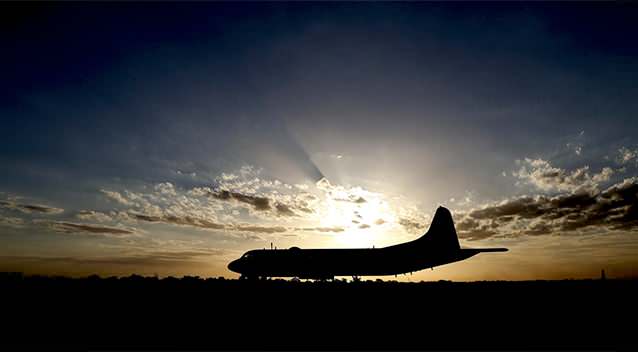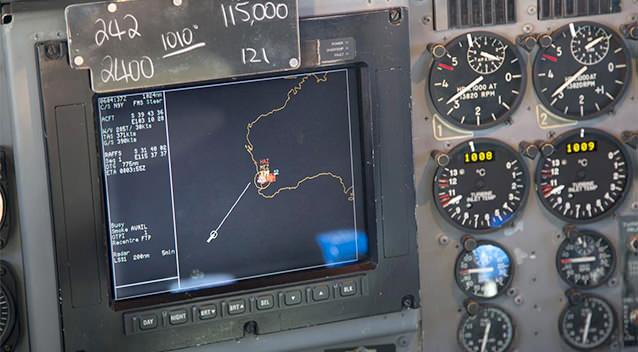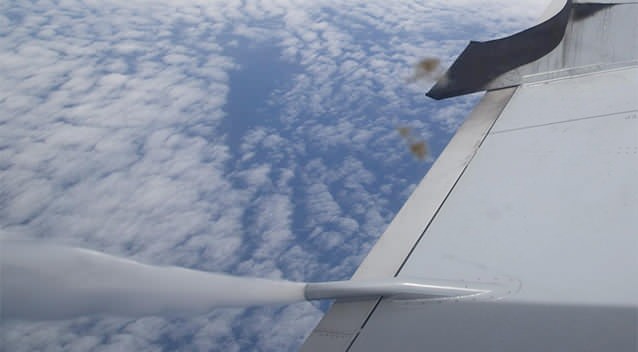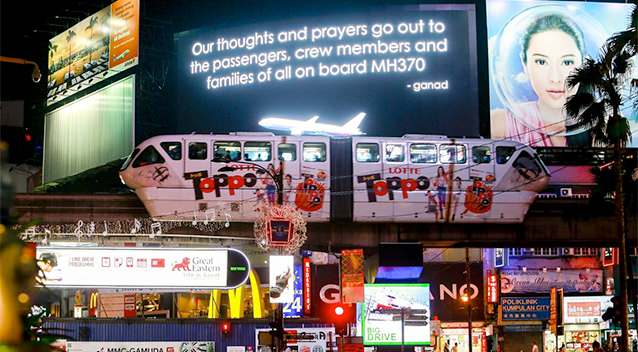Flight MH370: Stories of that final day
There was not a hint of what was to come in the hours leading up to the disappearance of the plane.
Three women woke before sunrise that day, leaving their hotel while it was still dark and boarding a small plane in Katmandu, Nepal, for a look at Mount Everest. They were Chinese retirees, avid photographers ending a two-week tour of the Himalayan nation. Late that night, after a stopover in Kuala Lumpur, they would head home to Beijing
An Indonesian couple woke up at home, a tidy two-storey concrete-walled house down a small alley in the city of Medan. A taxi arrived a few hours later to take them to the airport, starting them on a journey to a long-anticipated vacation without their children, a trip to China to see the Great Wall and Beijing's Forbidden City.
In Kuala Lumpur's Chinatown, artists and calligraphers headed down to breakfast about 8am. Some had been celebrating the night before, downing shots of the powerful Chinese liquor called Xifengjiu at the end of almost a week exhibiting their work. But they gathered early in the hotel restaurant, ready for a day of sightseeing and shopping before the late-night flight back to Beijing.

And in Perth, in Western Australia, a 39-year-old mechanical engineer woke up early in his red-roofed bungalow, leaving his wife and their two young boys for a 28-day mining job in Mongolia. Just before he headed to the airport, on his way to connecting flights in Kuala Lumpur and Beijing, Paul Weeks gave his wife his wedding ring and watch for safekeeping. If anything happened to him, he said, he wanted the boys to have them someday. "Don't be stupid!" she told him.
It was Friday morning, March 7.
By that evening, they would all be together in a departure lounge in Kuala Lumpur's airport, with its granite floors and soaring ceilings and tiny plot of transplanted, living rainforest. And a little after midnight on March 8, Malaysia Airlines Flight 370 took off for Beijing, carrying 239 people inside its meticulously engineered metal shell.
We know only the broadest outlines of what happened next.
Soon after takeoff, Flight MH370 disappeared. Its transponders had been switched off. Soon, the blip was gone from radars. This past week, after more than two weeks of searches across tens of thousands of square miles, Malaysia's prime minister announced that satellite data showed the plane's last known position to be in a remote corner of the Indian Ocean, far from its destination and far from any possible landing sites.
How it happened, and why, remains unclear. Perhaps it was a hijacking, perhaps pilot suicide, perhaps a catastrophic malfunction.
The people at airports, those who get dropped off, proceed through security and make their way to their gates, are usually right in the middle of the business of their lives. Much of what happens is not even memorable. But now, for many who knew the people aboard Flight MH370, that last full day looms so large. Everyday details, now loaded with the ballast of hindsight, take on fresh weight.
But does it mean anything that Liu Rusheng, at 76 one of the oldest of the 19 Chinese artists and calligraphers, argued with his wife shortly before their plane took off? Does it mean anything that Zhao Zhaofang, known for her delicate paintings of peonies, bought Malaysian chocolates that afternoon to take home as a present?
Is it important that Paul Weeks told his wife that his wedding ring should go to the first of his sons to get married, or that Chandrika Sharma, an Indian social activist on her way to a conference in Mongolia, called her elderly mother just before the plane took off?

A husband of one of the victims, a management consultant in Chennai, is puzzled over how the plane could have simply vanished.
"One is left with a creeping suspicion that there is more to it than what is being shared. And if that is the case, whose interests are being served?" he asked.
It's only in retrospect that what happened that Friday now seems anything more than prosaic, more than just another passing day.

Passengers checked in and boarded as usual, the plane departed on time and travelled a route that was well-used and nothing special.
The last ACARS transmission was nothing out of the ordinary, and no one on the ground had any cause to suspect what would happen next.
"Any stations in contact with Malaysian 370, please relay," came the call out to any aircraft in contact with MH370.
"Malaysian 370, this is Malaysian 88."
"Malaysian 370, this is Malaysian 52."
Within hours, all 239 on board the missing Malaysia Airlines Flight MH370 would have fallen victim to either an intentional suicide mission or a catastrophic event.

What would have been going through the minds of all those on board? Would they have been confused or panicked? Did they even have a chance to comprehend that the plane had made a massive U-turn?
“You can turn off the moving map display. You can disable the in-flight entertainment completely. You could just tell the passengers it’s broken," an Australian commercial pilot toldNews Ltd.
“Passengers might have (asked questions) but you can lock the flight deck door and no one’s getting in. They could bang on the door for the next two hours if they wanted but they’re not going to break down a bulletproof door.”
Did they cry or pray? Or had they tried in vain to break down the cockpit door?
We just don't know. The only thing we can be sure about is that their final moments would have been filled with fear.
The theory most pilots support is that all on board had passed out due to breathing difficulties as the plane ascended rapidly to 45,000 feet.
They would have all died within minutes.
Australian and International Pilots Association president Nathan Safe has shunned speculation suggesting sinister motives.
“They could have been trying to direct the plane somehow towards an airport to land at, depending on what was going on on-board," he said.
“They might have set the heading control component of the autopilot system to fly in that direction, south basically, and they became incapacitated after that and the plane just kept flying on autopilot until it ran out of fuel. Then the airspeed would have started to bleed back and the plane would have essentially flown itself into the sea.”
Investigators are also examining whether the ascent to 45,000 feet was a deliberate suicide attempt from Captain Zaharie.
The flight's pilot Zaharie Ahmad Shah, 53, joined Malaysia Airlines in 1981 and had more than 18,000 hours of flight experience. People who knew Zaharie from his involvement in opposition political circles in Malaysia and other areas of his life described him as sociable, humble, caring and dedicated to his job.
His Facebook page showed an aviation enthusiast who built his own flight simulator at home and flew remote-controlled aircraft, posting pictures of his collection, which included a lightweight twin-engine helicopter and an amphibious aircraft.
However, the most dangerous parts of a flight are takeoff and landing. Rarely do incidents happen when a plane is cruising 11 kilometres above the earth.
So the disappearance of a Malaysia Airlines jet well into its flight on that fateful Saturday morning has led aviation experts to assume that whatever happened was quick and left the pilots no time to place a distress call.
The fact that the giant passenger jet completed a U-turn mid-air lessens the probability that the plane suffered a catastrophic explosion but raises further questions about why the pilots didn't signal for help. If there was a minor mechanical failure — or even something more serious like the shutdown of both of the plane's engines — the pilots likely would have had time to radio for help. The lack of a call "suggests something very sudden and very violent happened," said William Waldock, who teaches accident investigation at Embry-Riddle Aeronautical University in Prescott, Arizona.
It's possible that there was either an abrupt breakup of the plane or something that led it into a quick, steep dive. Some experts even suggested an act of terrorism or a pilot purposely crashing the jet.
"Either you had a catastrophic event that tore the airplane apart, or you had a criminal act," said Scott Hamilton, managing director of aviation consultancy Leeham Co. "It was so quick and they didn't radio."
There would have been no chance of anyone on board communicating to anyone on the ground because of the speed, altitude and position of the plane, experts say.
No matter how unlikely a scenario, it's too early to rule out any possibilities, experts warn. The best clues will come with the recovery of the flight data and voice recorders and an examination of the wreckage.
It could take investigators months, if not years, to determine what happened to the Boeing 777 flying from Malaysia's largest city of Kuala Lumpur to Beijing. Here are the scenarios being investigated:
— PILOT DISORIENTATION. Curtis said that the pilots could have taken the plane off autopilot and somehow went off course and didn't realise it until it was too late. The plane could have flown for another five or six hours from its point of last contact, putting it up to 4800 kilometres away. This is unlikely given that the plane probably would have been picked up by radar somewhere. But it's too early to eliminate it as a possibility.
— FAILURE OF BOTH ENGINES. In January 2008, a British Airways 777 crashed about 1000 feet (300 metres) short of the runway at London's Heathrow Airport. As the plane was coming in to land, the engines lost thrust because of ice buildup in the fuel system. There were no fatalities.
Loss of both engines is possible in this case, but Hamilton said the plane could glide for up to 20 minutes, giving pilots plenty of time to make an emergency call. When a US Airways A320 lost both of its engines in January 2009 after taking off from LaGuardia Airport in New York it was at a much lower elevation. But Capt. Chesley B. "Sully" Sullenberger still had plenty of communications with air traffic controllers before ending the six-minute flight in the Hudson River.

— A BOMB. Several planes have been brought down including Pan Am Flight 103 between London and New York in December 1988. There was also an Air India flight in June 1985 between Montreal and London and a plane in September 1989 flown by French airline Union des Transports Aériens which blew up over the Sahara.
— HIJACKING. A traditional hijacking seems unlikely given that a plane's captors typically land at an airport and have some type of demand. But a 9/11-like hijacking is possible, with terrorists forcing the plane into the ocean.
— PILOT SUICIDE. There were two large jet crashes in the late 1990s — a SilkAir flight and an EgyptAir flight— that are believed to have been caused by pilots deliberately crashing the planes. Government crash investigators never formally declared the crashes suicides but both are widely acknowledged by crash experts to have been caused by deliberate pilot actions.
No comments:
Post a Comment